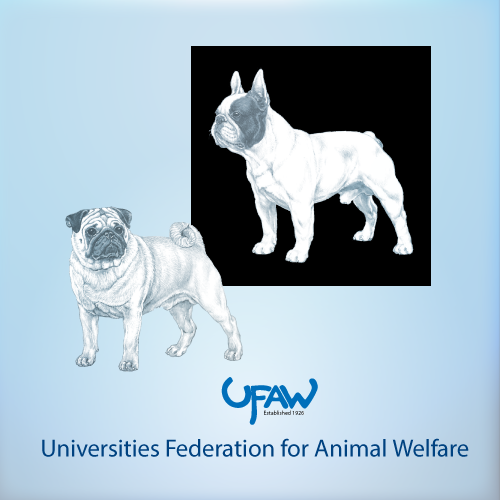
Assessment of welfare in brachycephalic dogs
Assessment of welfare and brachycephalic obstructive airway syndrome signs in young, breeding age French Bulldogs and Pugs, using owner questionnaire, physical examination and walk tests
Authors: Aromaa, M; Lilja-Maula, L; Rajamäki, MM
Source: Animal Welfare, Volume 28, Number 3, August 2019, pp. 287-298(12)
Publisher: Universities Federation for Animal Welfare
DOI: https://doi.org/10.7120/09627286.28.3.287
- https://www.ingentaconnect.com/contentone/ufaw/aw/2019/00000028/00000003/art00005#
- (Internal) Assessment of welfare and brachycephalic obstructive airway syndrome signs in young, breeding age French Bulldogs and Pugs, using owner questionnaire, physical examination and walk tests.pdf
Study based on Finnish data... Publication date: August 1, 2019
BOAS signs limit the daily activities of dogs - walk tests performance appears to be a more accurate reflection of tested dog's exercise tolerance than owner's perceptions.
Excerpts...
"Only four out of 95 French Bulldog and Pug owners reported that the BOAS signs limited the daily activities of their dogs. However, according to the physical, examination-based veterinary BOAS grading, 31/95 of the dogs had moderate to severe BOAS signs. In both breeds, the more severely affected dogs performed both exercise tests more poorly than those with no or mild BOAS signs. The longer exercise, namely the 1,000-m test, seemed slightly better able at differentiating between affected dogs and less affected ones. The results of this study further support the use of exercise tests as an important part of the breeding selection in French Bulldogs and Pugs. By influencing the breed standards set by Kennel Clubs and by using breeding selection tools, the harmful impacts of brachycephaly can be diminished."
"By combining information from the physical BOAS assessment, namely the functional BOAS scale, nostril stenosis and exercise capacity, the breeder has the opportunity to make responsible breeding decisions related to BOAS."

Recommended Comments